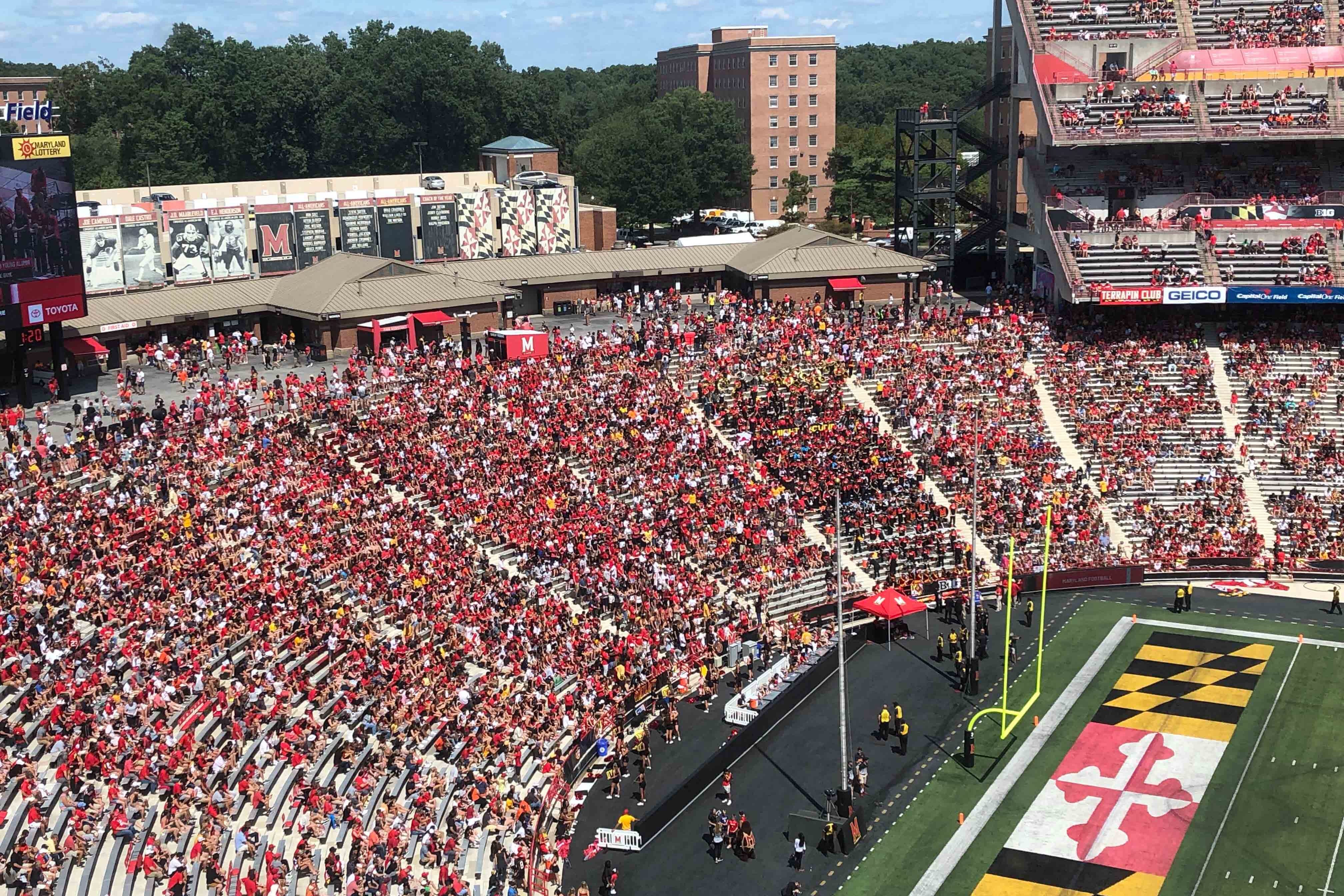Fifteen minutes before Maryland football’s Big Ten Conference bout with Illinois on Oct. 27, 2018, the vast pockets of space in the bleachers were apparent.
For a game that prompted more than 24,000 tickets to be sold, fewer than 11,000 were scanned into Maryland Stadium. But you wouldn’t know it when an announced attendance of 30,387 flashed on the scoreboard late in the second half.
There’s about 15 minutes until kickoff. pic.twitter.com/OsxOsK70le
— Andy Kostka (@afkostka) October 27, 2018
The NCAA allows for announced attendance figures to be generated in two ways: either through actual attendance (tickets scanned) or through tickets distributed (tickets sold and complimentary tickets).
Matt Monroe, Maryland’s associate athletic director for ticket operations, called it “common practice” for programs to use the latter method. And that has allowed schools like Maryland to report totals that are far higher than actuality, even as scanned attendance numbers in college football continue to dip.
“I don’t really know of many places that would announce their actual numbers. Just because if a ticket is paid for, it’s distributed,” Monroe said. “You count that into your revenue, you count that into your season ticket totals and your totals for the game.”
According to ticket data obtained through records requests from nine of the 14 Big Ten schools — Maryland, Rutgers, Michigan, Wisconsin, Illinois, Iowa, Ohio State, Minnesota and Nebraska — each program saw its average scanned attendance at home fall from 2017 to 2018 and seven saw drops from 2016 to 2017. The other five schools either did not respond to requests for data or declined to provide data.
The announced attendance figure helps mask those widespread problems.
Maryland, currently with a 3-6 record in 2019, has finished with losing football records each of the past four years, and had a 56.3 percent difference between announced attendance and scanned attendance in 2018. That was the second highest rate among the nine schools that provided data.
And getting fans to attend the games they purchase tickets for has been a problem, too. Among the seven schools that provided complete ticket data (Nebraska did not have 2018 tickets sold totals and Rutgers did not provide ticket scan totals), Maryland finished last in percentage of sold tickets in 2018 that were scanned into home games.
The Big Ten’s blue bloods have little trouble packing their stadiums, with Michigan, Ohio State and Nebraska all filling more than 80 percent of total stadium capacity last year based on scanned ticket totals.
Meanwhile, teams like Maryland, Rutgers and Illinois have placed at or near the bottom of the Big Ten standings in recent years, and the stadiums at those schools were each less than 40 percent full through the 2018 season.
Maryland was again last among the nine teams.
By announced attendance figures, though, Maryland appeared to fill 64.9 percent of maximum stadium capacity in 2018. Rutgers did so at a 71.2 percent clip, and Illinois clocked in at 59.6 percent.
For each home game, Maryland utilizes an audit system that helps generate an announced attendance figure, factoring in entities such as the marching band into the final number, according to Monroe.
In 2018, Maryland averaged about a 4,500 person difference between announced attendance and tickets sold for each home game. That disparity is made up of the distributed complimentary tickets.
“We’ve always done that here. It’s not something that we just came up with,” Monroe said. “So in order to be consistent in what we’ve done in the past, we’ve always just done it that way. And again, I think it’s common practice.”
According to a Wall Street Journal dataset of 96 schools’ ticket and attendance numbers from 2017, only the United States Naval Academy used its scanned attendance as its announced figure.
The NCAA attendance guidelines also help smaller schools stay afloat in the college football landscape.
NCAA bylaws require institutions to average 15,000 in home attendance at least once during a rolling two-year period to maintain Football Bowl Subdivision status — the peak level of college football. While Big Ten teams have little to worry about, smaller programs take advantage of the attendance rules to reach the threshold.
The athletic department of Miami University (Ohio) purchased tickets in 2018 to meet the requirement, which is allowed under NCAA guidelines, according to Miami’s student newspaper. Coastal Carolina University’s athletic department employed a similar tactic in 2017, the program’s first season in the FBS.
So long as the attendance rules remain flexible for college football programs, they’ll continue to make the most of them to counteract declining attendance.
“With football, a lot of it has to do with things like weather and people’s schedules,” Monroe said. “Those are things that are out of our control.”

